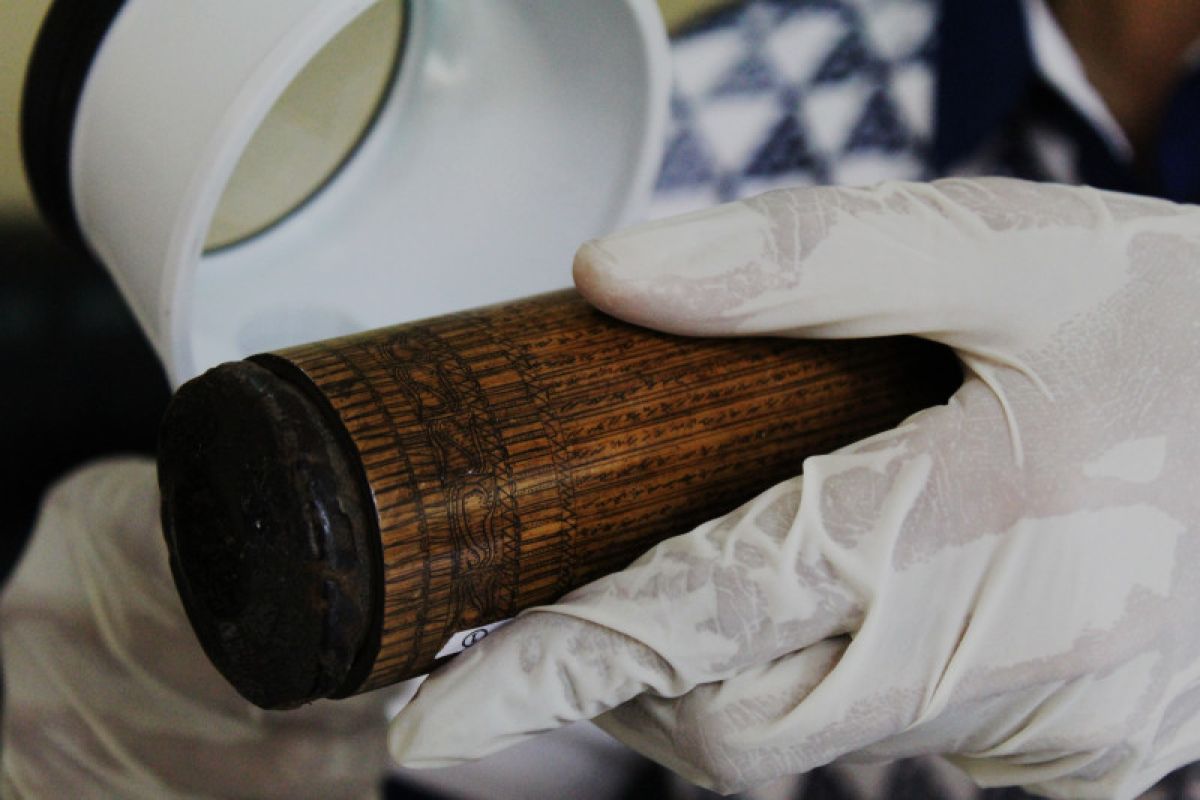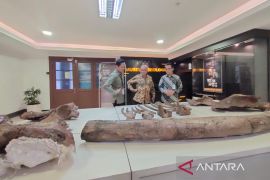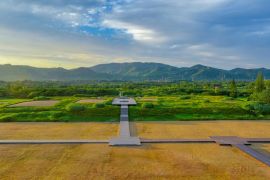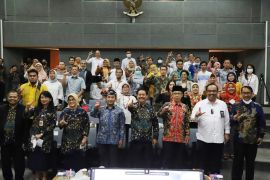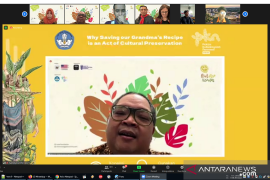Various steps were taken to gain clarity on human life in the past in several areas, including Lampung.
Cultural artifacts, in the form of ancient manuscripts, provide a clear picture of the life and cultural developments of Lampung people in ancient times.
Lampung Province, also known as "Sai Bumi Ruwa Jurai," not only has abundant agricultural products, such as pepper, coffee, and cloves, but is also rich in customs and culture that can captivate all those who study it.
Through various types of ancient manuscripts, Lampung philologists began to explore several puzzles about the culture that developed in Lampung over the past centuries.
A folded book made of old and fragile Javanese paper, neatly folded in a special carbon paper wrap on each side, side-by-side with 15-cm bamboo blades with glossy lacquer, holds wealth of information on the culture of the people of Lampung.
Strokes of visual symbols, which hold deep meaning and are an expression of the soul, are neatly arranged on a Javanese paper called dluwang (or daluang), which has a faded brown color on the bamboo slats.
Manuscript distribution map
This script, now commonly known by the people of Lampung as "Had Lampung or Kelebai Surat Lampung," offers the reader a glimpse into the life in "Sai Bumi Ruwa Jurai" several centuries ago.
The various manuscripts had proven that the Lampung people during ancient times were literate and expressed their feelings through ancient Had Lampung and even Arabic and Palawa script, as well as pictures.
One of Lampung’s manuscript philologists, Lisa Misliani, stated that with these ancient manuscripts, people in modern times can gain an understanding of how ancient Lampung people read, wrote, and also expressed themselves through pictures in the past.
"Had Lampung, such as Ka-Ga-Nga-Pa, with sound signs, such as ulan, teklubang, kelengiyah, and rejenjung, written in several manuscripts have also described the evolution of the use of script in the life of the ancient Lampung people, to the modern Lampung script that is used until today," Misliani stated.
Through dissecting the content of ancient manuscripts, it also came to light that the ancient Lampung people were divided into several groups with different hobbies to express themselves, she explained.
"There were groups of poets, who liked to describe their surroundings through prose in beautiful language, while there are groups whose task was to expand religious symbols, whereas some groups handled medical treatment. There are customs of indigenous people, who share family genealogies," he revealed.
A map of the distribution of manuscripts and community groups can also be presented, wherein ancient manuscripts containing prose or poetry with figurative sentences are often found in the West Lampung area.
Religious symbols and medicinal texts were found in almost all areas, while manuscripts with family genealogy are commonly found in East Lampung.
"It is quite unique if we try to understand the life of the ancient Lampung people, who wrote the family tree on bamboo blades," she remarked.
A prose is also written on the bark depicting a person admiring a girl in his village. From here we can see the development of the Lampung language as well, Misliani noted.
Related news: ASEAN launches digital archive of region's cultural heritage
Related news: Cultural heritage agency unearths large Ganesha statue in Dieng
Persuading owner
The acculturation of the culture of ancient Lampung people is also apparent from several ancient manuscripts inscribed in various written media.
In one of the manuscripts, with the code NLP97N69, it can be seen that the fusion of cultures in Indonesia had enriched the treasures of ancient manuscripts. The 17th century manuscript reveals the origin of living things created by the Creator. In the manuscript, there is a mix of cultures wherein the script is written in Had Lampung, but the language used is Lampung mixed with Malay language.
From the several manuscripts that were translated, it is known that cultural acculturation occurred with Malay, Banten, Arabic, Chinese, and Bangka Belitung cultures, thereby enriching the types of ancient manuscripts.
The richness of culture brought to light through the discovery of ancient manuscripts is the fruit of the hard work of historians, archaeologists, and philologists in Lampung.
Manuscript activists have long hunted for various ancient Lampung manuscripts in the community by directly meeting the owners of ancient manuscripts in remote areas.
Researchers came across situations wherein the owner of the manuscript refused to just show his ancient manuscripts for documentation purposes. Sometimes it took almost an entire day until midnight to just see and translate the contents of the ancient manuscript.
The journey to explore the culture of the ancient Lampung people was also told by one of the archaeologists of Lampung, I Made Giri.
By slowly opening ancient manuscripts that are neatly stored in carbon paper, the man, who is now a curator of the Lampung Museum, shed light on several developments seen in these ancient artifacts.
Digitization
Ancient manuscripts belonging to the community are made from the fermented halim tree bark, with scripts formed from spice ink and deduruk fruit, while some are written on blades of bamboo betung, such as the place of the letter, whereas some are from buffalo horn, shells, rattan, steel plate, and European paper.
By using knife and palm fibers, the ancient Lampung people wrote various things and some even wrote about "khajah," or medicine spells.
"For the time being, 84 ancient manuscripts belonging to the Lampung people have been archived, some of which are written with had Lampung (Lampung script) and also Arabic script, Jawi script, and Palawa script," the Balinese man, who is fond of Lampung culture, stated.
He said that the digitization of manuscripts had been conducted in order to continue to preserve the variety of ancient manuscripts.
There were also people, who voluntarily submitted ancient manuscripts inherited from the family, to be stored at the Ruwa Jurai Museum in Lampung.
The existence of research, the digitization of ancient manuscripts, and the role of the Lampung Museum as a place for storing ancient artifacts and learning facilities for the community, especially the younger generation, is part of the efforts to preserve Lampung's cultural heritage.
Related news: Lampung gateway to Sumatra, needs tighter restrictions: minister
Related news: Lampung's economy shows improvement: Bank Indonesia
Translator: Azis Kurmala, Ruth Intan S
Editor: Sri Haryati
Copyright © ANTARA 2021
